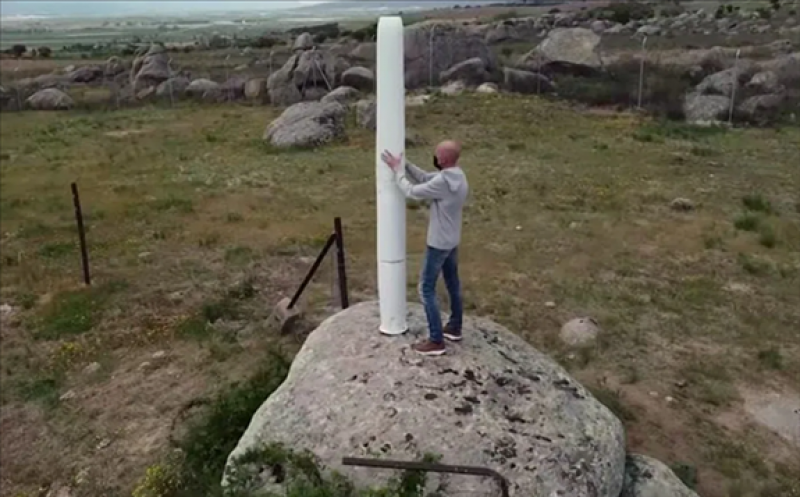David Yanez, co-founder of the startup Vortex Bladeless, is the inventor of a bladeless wind turbine, a slender vertical and simple piece of machinery that, instead of rotating or spinning, oscillates to collect the kinetic energy of the wind.
He said it transforms that energy into electricity at approximately 30 per cent of the cost of conventional wind energy sources.
"What we want is to try to find a niche that is not properly covered by conventional wind power," Yanez said, standing next to an oscillating 2.75-metre bladeless prototype set up in the countryside near Avila, Spain, where Vortex Bladeless has its base.
"The niche ... we see could be [the] small wind industry, because the absence of maintenance, no need for oil and the low cost could be the elements that make this idea a useful tool for distributing energy, producing energy close to the point of consumption."
As an engineering student in 2012, Yanez watched a video of the Tacoma Narrows bridge collapse in Washington state in 1940. He got the inspiration for his invention by seeing the way the ill-fated bridge oscillated in a storm.
Vortex Bladeless was born around 2015, and since then, Yanez and his team have been working to develop the bladeless turbine with the hope of commercializing it.
Their original design has since evolved and currently they are working with prototypes that measure 2.75 metres and 85 centimetres, which are aimed at being used in urban centres.
Produces no noise

Vortex Bladeless wind turbines can be used on their own or in conjunction with solar panels.
During the day and when there isn't much wind, solar panels could provide energy. In the evening, when the wind picks up, the bladeless wind turbine could step in to provide energy around the clock, Yanez explained.
"For all those urban centres that do not have as much solar resource as Spain and the whole Mediterranean area, the urban environment seems to fit perfectly with this idea," Yanez said.
It also produces no noise and doesn't require much maintenance compared to traditional wind turbines, he said.
CEO Rodrigo Ruperz said that the company's current prototypes can also be useful in more remote environments.
"We think that there is a niche market that so far has not been developed," Ruperz said, speaking at the University of Salamanca, where a small 85-cm prototype is installed on the roof of one of the buildings.
Can't be rusted by humidity or salt
In the long term, Yanez's hope is that his invention can be used in the offshore wind industry.
"This technology could have an advantage because of the fact it does not have elements that can be rusted by humidity or salt, and maybe this space could be the most suitable for it," he said.
Currently, Vortex Bladeless has five patent families internationally and Yanez estimates that with a suitable investor, they could commercialize their prototypes in 12 to 18 months.
Previous bladeless wind turbine designs have included the Electrostatic Wind Energy Converter from Delft University in the Netherlands and the Aeoleaf "wind tree" from the French firm New World Wind.